The tropical rain belts with an annual cycle and a continent model intercomparison project: TRACMIP
- PMID: 32850005
- PMCID: PMC7447145
- DOI: 10.1002/2016MS000748
The tropical rain belts with an annual cycle and a continent model intercomparison project: TRACMIP
Abstract
This paper introduces the Tropical Rain belts with an Annual cycle and a Continent Model Inter-comparison Project (TRACMIP). TRACMIP studies the dynamics of tropical rain belts and their response to past and future radiative forcings through simulations with 13 comprehensive and one simplified atmosphere models coupled to a slab ocean and driven by seasonally varying insolation. Five idealized experiments, two with an aquaplanet setup and three with a setup with an idealized tropical continent, fill the space between prescribed-SST aquaplanet simulations and realistic simulations provided by CMIP5/6. The simulations reproduce key features of present-day climate and expected future climate change, including an annual-mean intertropical convergence zone (ITCZ) that is located north of the equator and Hadley cells and eddy-driven jets that are similar to present-day climate. Quadrupling CO2 leads to a northward ITCZ shift and preferential warming in Northern high latitudes. The simulations show interesting CO2-induced changes in the seasonal excursion of the ITCZ and indicate a possible state dependence of climate sensitivity. The inclusion of an idealized continent modulates both the control climate and the response to increased CO2; for example, it reduces the northward ITCZ shift associated with warming and, in some models, climate sensitivity. In response to eccentricity-driven seasonal insolation changes, seasonal changes in oceanic rainfall are best characterized as a meridional dipole, while seasonal continental rainfall changes tend to be symmetric about the equator. This survey illustrates TRACMIP's potential to engender a deeper understanding of global and regional climate and to address questions on past and future climate change.
Figures




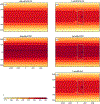
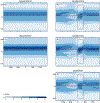
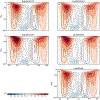


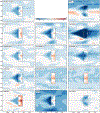
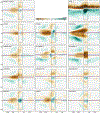





References
-
- Adam O, Bischoff T, and Schneider T (2016a), Seasonal and interannual variations of the energy flux equator and ITCZ. Part I: Zonally averaged ITCZ position, J. Clim, 29, 3219–3230, doi:10.1175/JCLI-D-15-0512.1. - DOI
-
- Adam O, Bischoff T, and Schneider T (2016b), Seasonal and interannual variations of the energy flux equator and ITCZ. Part II: Zonally varying shifts of the ITCZ, J. Clim, 29(20), 7281–7293, doi:10.1175/JCLI-D-15-0710.1. - DOI
-
- Anderson J, et al. (2004), The new GFDL global atmosphere and land model AM2-LM2: Evaluation with prescribed SST simulations, J. Clim, 17(24), 4641–4673.
-
- Armour KC, Marshall J, Scott JR, Donohoe A, and Newsom ER (2016), Southern Ocean warming delayed by circumpolar upwelling and equatorward transport, Nat. Geosci, doi:10.1038/ngeo2731. - DOI
Grants and funding
LinkOut - more resources
Full Text Sources
Miscellaneous
